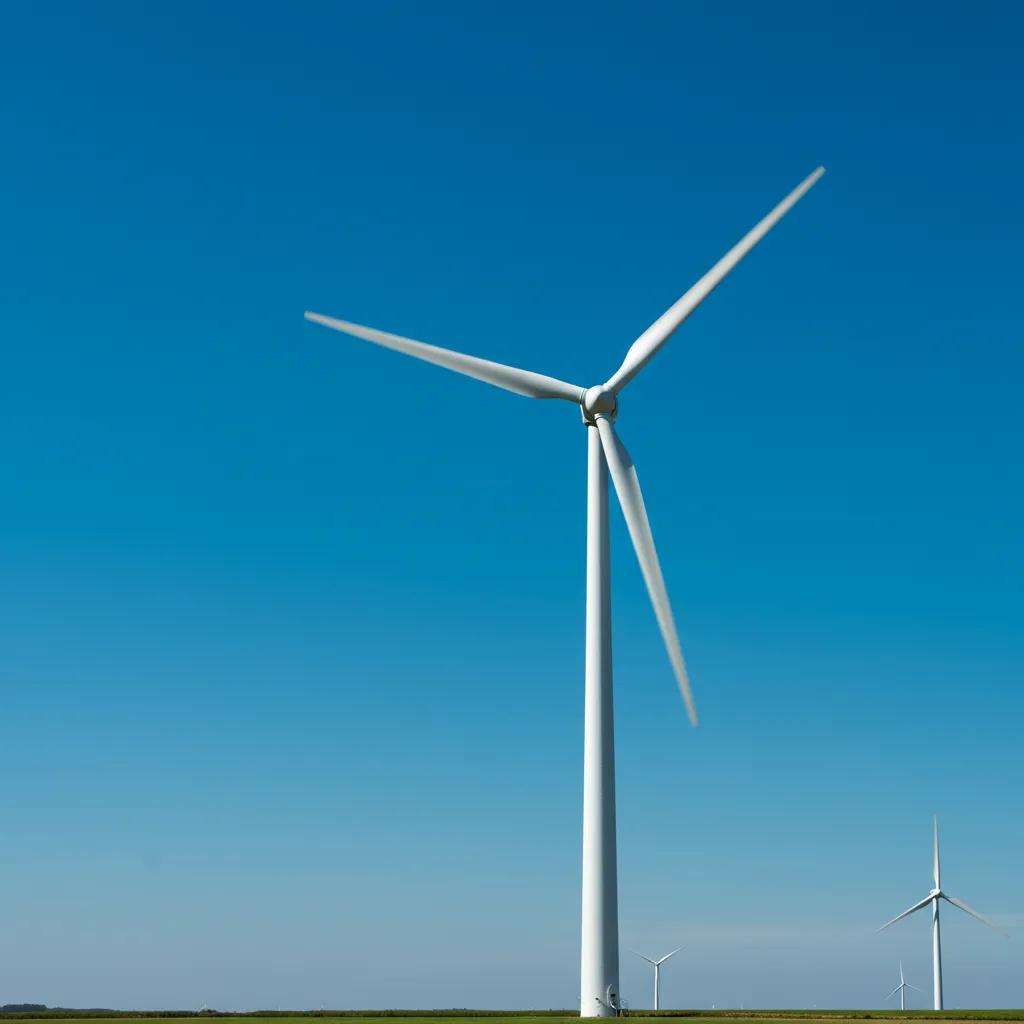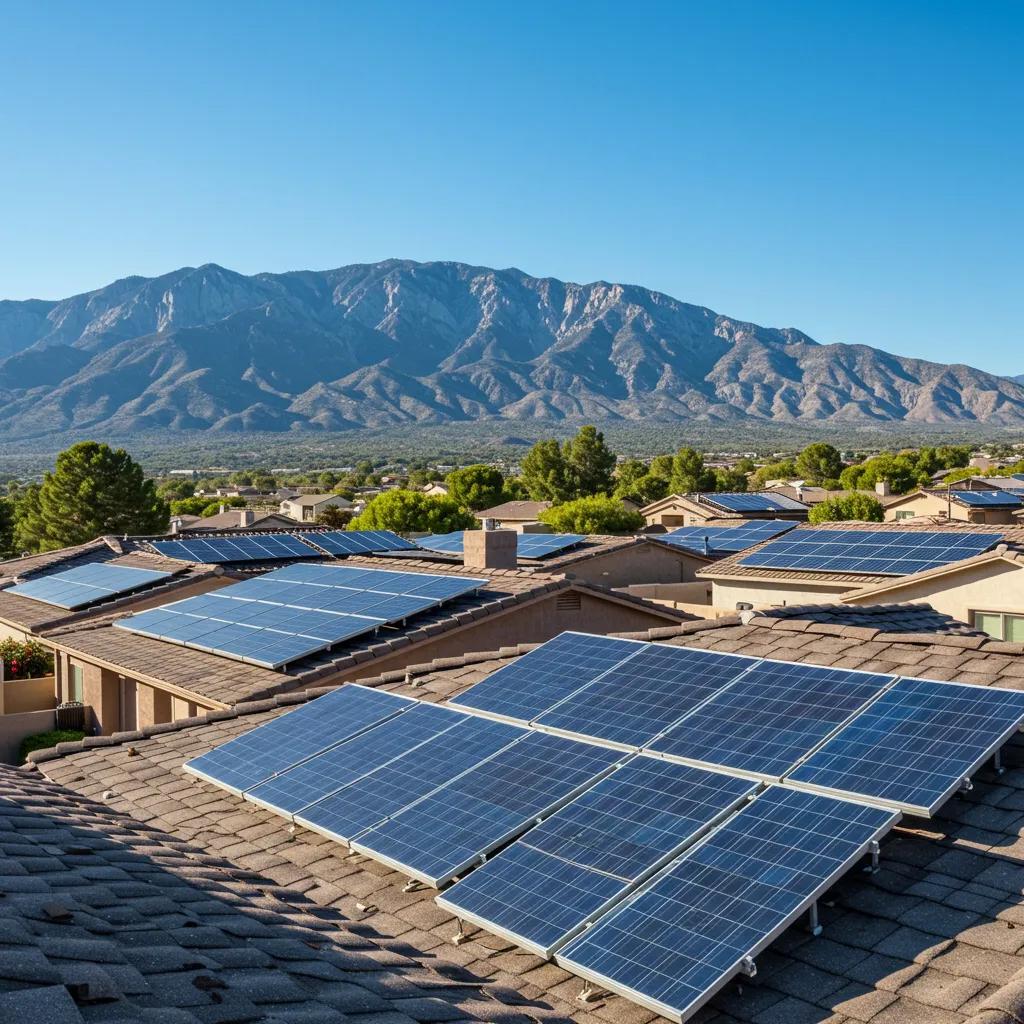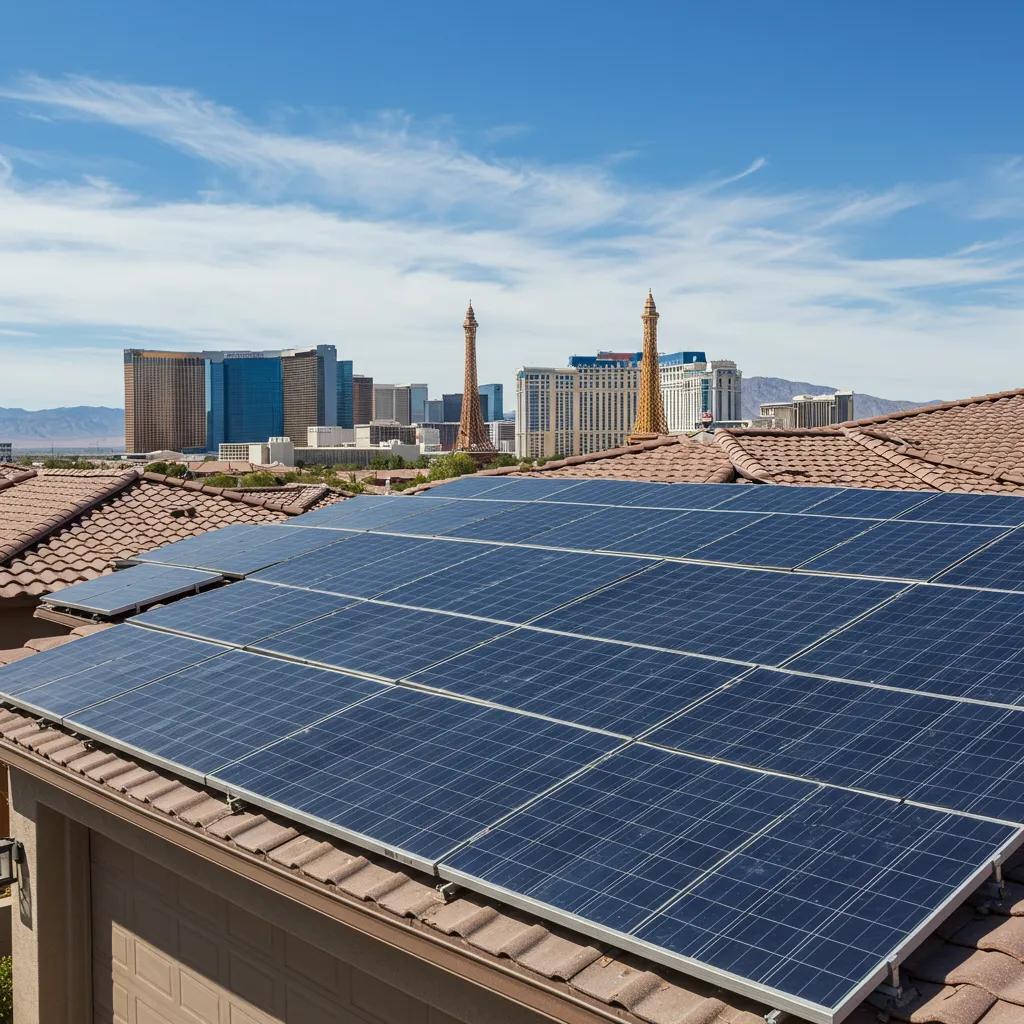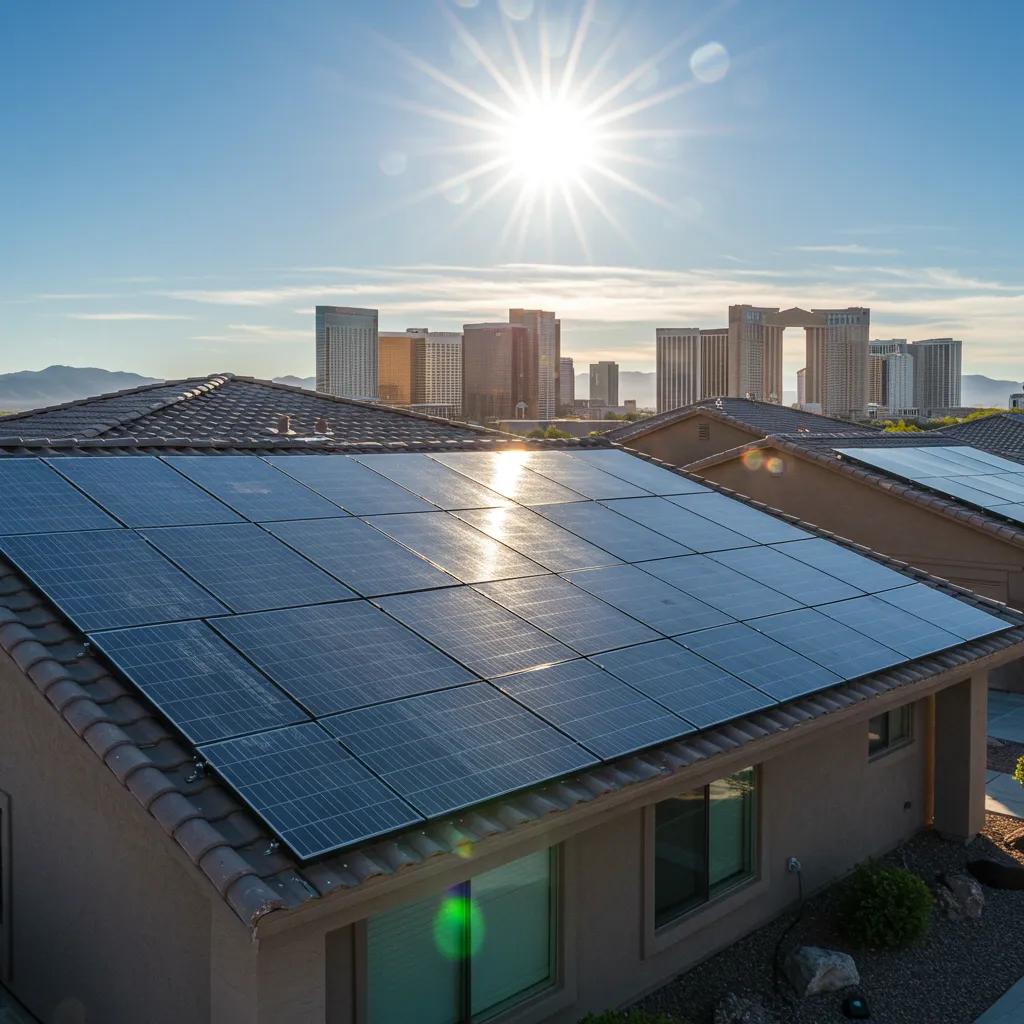Your Complete Guide to Wind Turbine Technology: Types, How They Work, Benefits, and Uses
Wind turbines harness the kinetic energy from moving air, transforming it into usable electricity. They achieve this through spinning blades, a drivetrain, and sophisticated power electronics that condition the output for seamless integration with the grid or battery storage. This guide dives deep into wind turbine technology, exploring various types, the fundamental mechanical and aerodynamic principles behind power generation, and practical applications for homes and businesses. We’ll also cover how wind power can beautifully complement your existing rooftop solar setup right here in Las Vegas. Many property owners and facility managers are seeking clear, local insights on whether a small wind system is a smart investment; this article offers practical steps for assessment, guidance on Nevada permitting, and realistic expectations for costs, upkeep, and performance. You’ll find detailed comparisons of Horizontal Axis and Vertical Axis designs, breakdowns of key components, and a step-by-step installation pathway specifically tailored for Las Vegas conditions. Plus, we’ll offer advice on hybrid solar–wind systems. Throughout this guide, we use clear relationships (types → attributes → use-cases) and handy checklists to help you evaluate suitability and determine your next steps. This includes options to request a comprehensive energy assessment, such as a Free Solar Consultation or Wind Energy Consultation, directly with Vegas Solar, LLC.
What Are the Main Types of Wind Turbines?
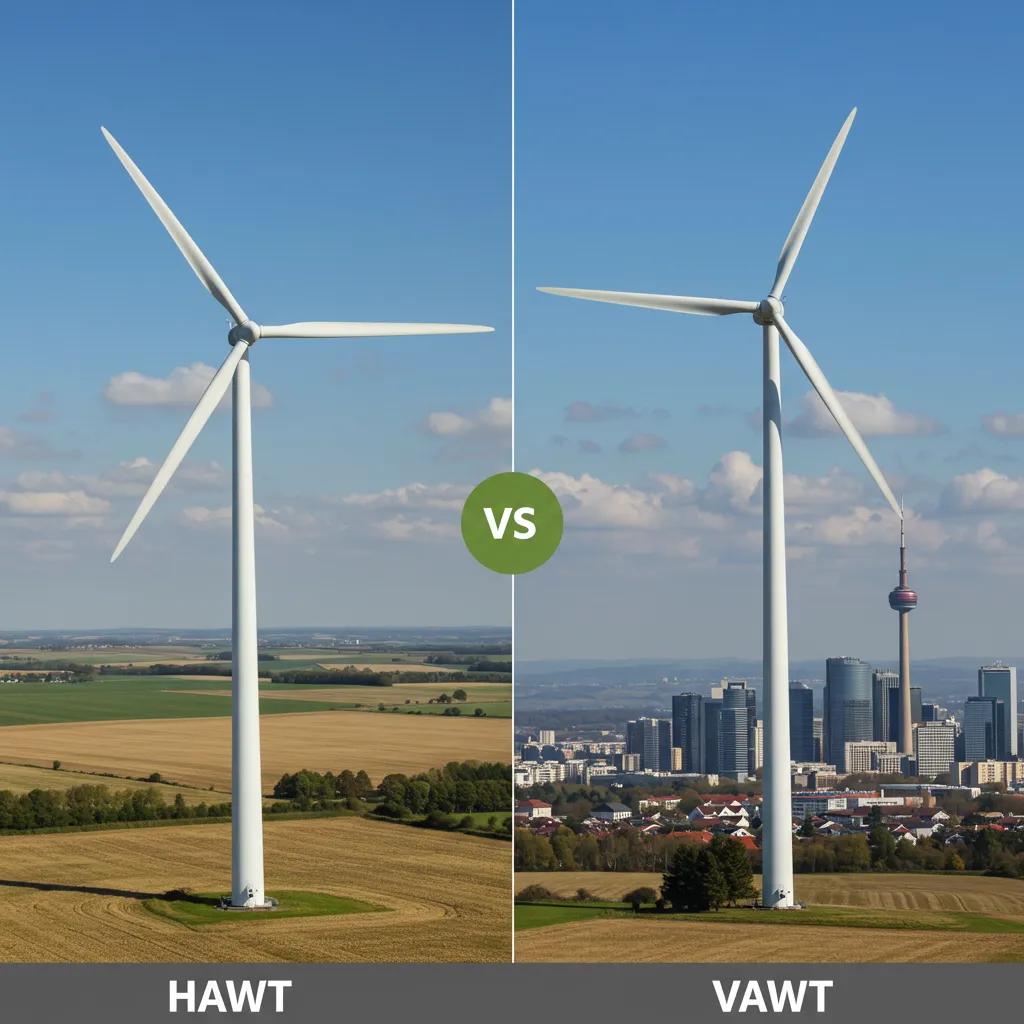
Wind turbines are classified based on their rotor orientation, size, and intended use, with each type converting wind energy differently and performing best under specific site conditions. The two primary categories are Horizontal Axis Wind Turbines (HAWTs) and Vertical Axis Wind Turbines (VAWTs). Further distinctions include small-scale turbines for residential use and massive offshore turbines designed for stronger, more consistent winds. Understanding these categories is crucial for property owners to match the turbine’s scale and rotor design to average wind speeds, site turbulence, and local zoning regulations, ensuring the best possible return on investment. Below, you’ll find a quick comparison, followed by a detailed table contrasting the main types by attributes like typical power output, optimal wind speeds, physical footprint, noise levels, and ideal applications.
Different turbine designs are suited for different applications and site constraints. The table below highlights typical characteristics to help you quickly compare your options.
This comparison highlights that HAWTs are the dominant choice for utility-scale and many onshore projects due to their superior aerodynamic efficiency. VAWTs and small-wind designs, however, can be more practical in situations where turbulence, proximity to buildings, or aesthetic considerations limit tower height.
What Is a Horizontal Axis Wind Turbine?
A Horizontal Axis Wind Turbine (HAWT) is a machine where blades spin on an axis parallel to the ground. It uses the principle of airfoil lift to generate torque, which then drives a shaft connected to a generator. HAWTs typically feature long, pitched blades and are mounted on a tower, with the nacelle (housing the gearbox, generator, and control systems) positioned at the top. Power outputs can range from small kilowatt-sized units for homes and remote locations to multi-megawatt turbines used in large wind farms and offshore installations, making the HAWT a highly adaptable technology. The excellent lift-to-drag ratio of HAWT blades allows for efficient power capture in moderate to high wind speeds. However, they require careful placement to avoid turbulence and ensure accessibility for maintenance. This often leads to considering alternative designs like VAWTs for sites with turbulent or confined wind conditions.
How Does a Vertical Axis Wind Turbine Differ?
Vertical Axis Wind Turbines (VAWTs) rotate on a vertical shaft and can capture wind from any direction without needing a yaw mechanism. This simplifies installation, especially in areas near buildings or where urban turbulence is a factor. Their lower center of gravity and often modular construction can reduce tower complexity and visual impact. Certain VAWT designs are also better equipped to handle gusty, turbulent wind patterns compared to HAWTs. However, VAWTs generally exhibit lower aerodynamic efficiency and power density than HAWTs, which can make them less economically competitive on large, open sites. VAWTs become a compelling option when site limitations or aesthetic preferences take precedence over achieving maximum peak efficiency. Because VAWTs trade peak performance for omnidirectional operation and easier siting, they are a practical choice for homeowners considering small-wind solutions in built-up environments.
What Are Small Wind Turbines for Homes?
Small wind turbines designed for residential use are compact systems typically sized to meet typical household energy demands, usually ranging from 0.5 to 20 kW. Their selection hinges on factors like average wind speed at the intended hub height, potential tower height, and local regulations. Key siting considerations include the mean wind speed at the planned hub height (measured in meters per second), the intensity of turbulence, required setback distances from property lines and structures, and the availability of clear, unobstructed wind flow. Modern turbines designed for lower wind speeds feature reduced cut-in thresholds, allowing them to generate useful energy even in less-than-ideal conditions. Homeowners should carefully evaluate the projected annual energy production (kWh), estimated payback periods, and how the system will integrate with battery storage or grid-tied inverters. Accurate wind resource data, either from on-site measurements or reliable modeling, is essential for realistic performance forecasts. These residential turbines are a vital component of distributed energy systems, often paired with battery storage or rooftop solar to maximize on-site renewable energy generation.
How Do Offshore Wind Turbines Operate?
Offshore wind turbines operate in environments with higher and more consistent wind speeds. They utilize significantly larger rotor diameters and taller hub heights, or employ floating platforms, to capture substantially more energy per turbine. Offshore installations typically involve fixed-bottom foundations in shallower waters or floating foundations for deeper areas. The logistics involved in installation, grid connection, and ongoing maintenance are considerably more complex than for onshore projects. The offshore environment offers higher capacity factors and a reduced visual impact from shore, but at the expense of greater capital investment and longer development timelines, making them primarily the domain of utility-scale developers rather than residential installers. Understanding the vast difference in scale between offshore and onshore turbines helps homeowners set realistic expectations for technology that is predominantly utility-focused.
How Do Wind Turbines Work to Generate Electricity?
Wind turbines generate electricity by converting the kinetic energy present in moving air into rotational mechanical energy, which is then transformed into electrical energy by a generator. This process involves the coordinated action of the blades, rotor, drivetrain, and power electronics. Aerodynamic lift acting on the airfoil-shaped blades creates torque, causing the rotor to spin. This rotational motion is transferred through a shaft and a gearbox (or directly, in direct-drive systems) to a generator that produces alternating current (AC). Power conditioning systems then adjust the voltage and frequency to match grid or battery requirements. The overall electricity output is determined by factors such as wind speed, the turbine’s swept area, air density, and its overall efficiency, often represented by power curves and capacity factor metrics. Below is a breakdown of the key components, detailing their function, typical lifespan, and maintenance needs, to help you understand what drives performance and long-term reliability.
This table emphasizes that the condition of the blades, the type of drivetrain (gearbox or direct drive), and the structural integrity of the tower are critical factors directly influencing operational uptime and overall lifecycle costs, which are important considerations when comparing systems for residential versus utility-scale applications.
What Are the Key Components of a Wind Turbine?
The essential components of a wind turbine include the blades, hub, rotor, nacelle (which contains the gearbox, generator, and controller), tower, and foundation. Each part plays a distinct role in capturing wind energy and delivering electrical power. The blades are shaped like airfoils to generate lift and are typically constructed from fiber-reinforced composites to achieve an optimal balance of strength and lightness. The nacelle houses the electromechanical systems responsible for converting rotational motion into electricity and managing the turbine’s performance. Towers provide the necessary height to access stronger, less turbulent winds at higher altitudes, with taller towers generally increasing energy production but also raising costs and permitting complexities. Foundations vary significantly, from concrete pads for onshore installations to monopiles or floating anchors for offshore projects. Understanding how these components work together as a system helps owners prioritize inspections and maintenance to maximize energy output and extend the turbine’s operational lifespan.
How Is Kinetic Energy Converted into Electrical Energy?
The conversion of kinetic energy into electrical energy follows a clear sequence: wind exerts aerodynamic forces on the turbine blades, causing the rotor to spin. This rotational motion is transmitted through a shaft (and potentially a gearbox) to a generator, which produces AC electricity. Power electronics then condition this electricity for immediate use or export to the grid. The turbine’s power output follows a characteristic curve: minimal generation below a certain “cut-in” speed, increasing output as wind speed rises to the “rated” speed, plateauing at the turbine’s maximum “rated” power, and shutting down at a “cut-out” speed to prevent damage in excessively high winds. The “capacity factor”—the ratio of actual energy produced to the theoretical maximum possible—reflects real-world performance and is influenced by resource quality, turbine size, and siting. Simple calculations and visualizing this power curve can help homeowners grasp how even small increases in average wind speed can lead to significantly higher annual energy yields.
What Aerodynamic Principles Enable Wind Turbine Function?
Wind turbines primarily operate on the principle of aerodynamic lift, rather than drag. The airfoil shape of the blades generates lift perpendicular to the direction of the wind flow, creating the torque that spins the rotor. Optimizing the “tip speed ratio” (the ratio of the blade tip’s speed to the wind speed) and the airfoil’s camber are key to maximizing conversion efficiency. Betz’s limit establishes the theoretical maximum efficiency for extracting kinetic energy from the wind, which is approximately 59.3%. This theoretical limit provides a benchmark for realistic efficiency expectations, even as modern turbine designs approach a significant portion of this maximum through sophisticated engineering and control systems. These aerodynamic principles underscore why blade design, rotor diameter, and control strategies are just as crucial as tower height when projecting a turbine’s energy output.
What Are the Benefits of Wind Energy for Homes and Businesses in Las Vegas?
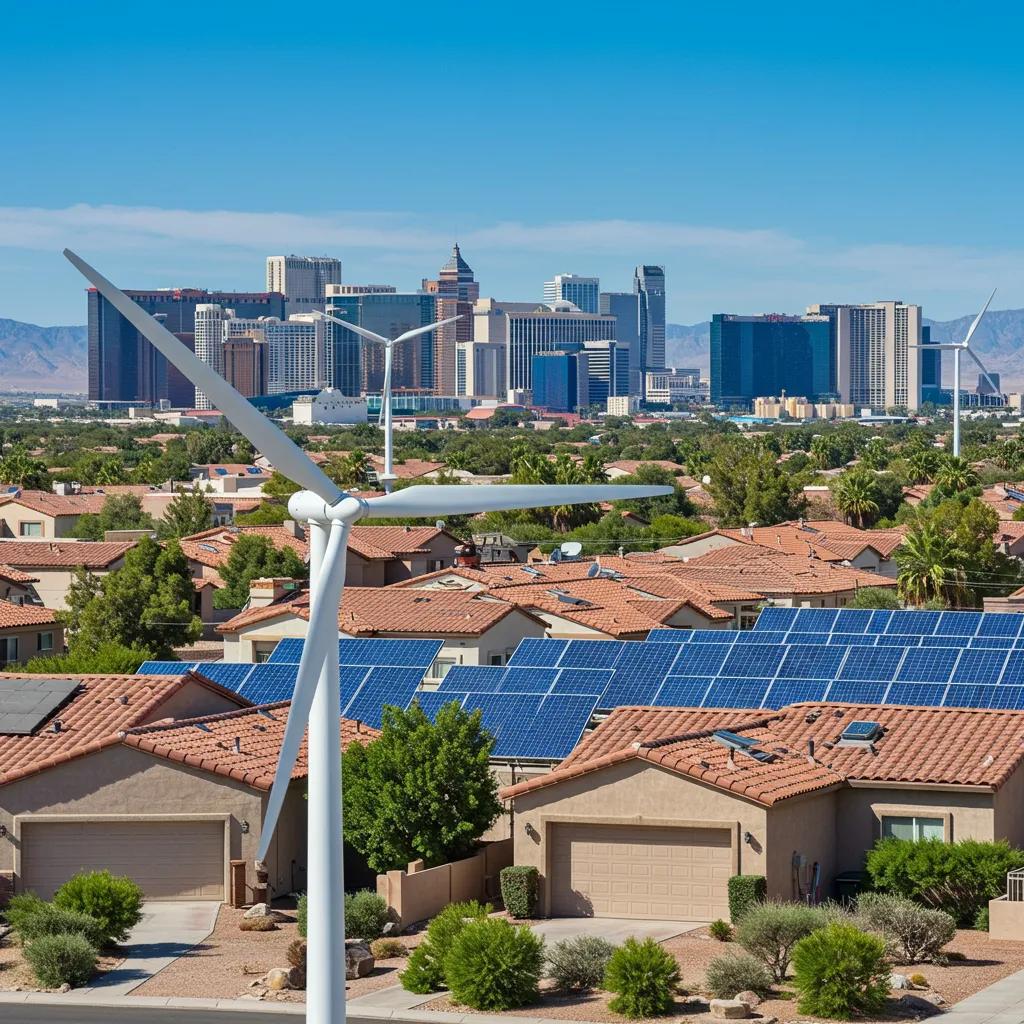
When site-specific wind resources and permitting allow, wind energy offers significant potential for cost savings, reduced carbon emissions, and enhanced energy resilience for properties. In Las Vegas, combining wind power with rooftop solar can effectively smooth out energy generation patterns and boost overall on-site energy production. Key local advantages include diversifying your energy sources to lessen reliance on the grid during peak demand, lowering operational electricity expenses when turbines generate substantial kilowatt-hours, and contributing to emissions reduction goals through clean energy generation. Nevada’s framework of incentives and interconnection policies can be supportive of small-wind or hybrid installations, but feasibility ultimately depends on accurately measured or modeled wind speeds at hub height, as well as local zoning and homeowner association (HOA) restrictions. The following list summarizes the core benefits, providing brief details to help guide your decision-making and outline potential next steps.
Wind energy can provide distinct advantages depending on your property’s unique characteristics. The list below helps homeowners and businesses prioritize their goals.
- Cost Savings: Generating your own electricity with wind offsets the need to purchase power from the grid, leading to lower monthly utility bills, especially when your production aligns with your consumption patterns.
- Environmental Benefits: On-site wind power generation significantly reduces your property’s carbon footprint by displacing electricity derived from fossil fuels, supporting local sustainability initiatives.
- Resilience and Backup Power: When paired with battery storage, wind systems can provide essential power during grid outages, enhancing your energy independence and security.
- Potential Property Value Increase: Documented upgrades like renewable energy systems can make properties more attractive to potential buyers who are seeking lower long-term operating costs.
How Does Wind Energy Reduce Energy Costs?
Wind energy lowers your energy expenses by generating kilowatt-hours (kWh) on-site, which you would otherwise have to buy from the utility. The actual savings depend on local electricity rates, the terms of your net metering or export compensation agreement, and the proportion of your energy needs met by the wind turbine. Typically, small-wind systems offset a portion of a household’s energy consumption. Economic viability improves with higher average wind speeds, favorable electricity rate structures, or the ability to store and shift generated power to reduce peak demand charges. For example, a 5 kW small-wind system operating at a modest capacity factor could produce several thousand kWh annually, significantly reducing grid purchases and shortening the payback period, especially when combined with available incentives. Property owners are encouraged to conduct a feasibility study using measured or modeled wind resource data to accurately estimate the return on investment (ROI) and determine whether wind, solar, or a hybrid approach is the most suitable strategy.
What Environmental Advantages Does Wind Energy Offer?
By generating electricity without burning fossil fuels, wind energy directly contributes to reducing greenhouse gas emissions and improving local air quality. Each kilowatt-hour (kWh) produced on-site by a wind turbine lowers your home’s carbon footprint. When combined with rooftop solar, wind power can further displace grid-supplied electricity, especially during times when solar generation is lower, such as at night or during certain seasons. Collectively, distributed wind installations across a community help achieve broader air quality improvements and align with municipal sustainability objectives. Integrating wind with solar amplifies these environmental benefits by increasing the total amount of renewable energy generated on-site and decreasing reliance on non-renewable power sources.
How Does Wind Energy Impact Property Value and Energy Independence?
Wind energy installations can potentially enhance a property’s market value by reducing ongoing operating costs and offering a degree of energy resilience. However, the extent of this impact can vary based on factors like aesthetics, the quality of permitting documentation, and local buyer preferences. Sellers who can provide clear documentation of permitted, well-maintained renewable energy systems and demonstrate tangible utility bill reductions may find their properties more appealing to buyers. Conversely, poorly documented or non-compliant installations could complicate property transactions. From an energy independence perspective, wind systems integrated with battery storage provide a reliable power source during grid outages and allow homeowners to reduce their reliance on the grid during periods of high electricity prices. Proper permitting, meticulous maintenance records, and thoughtful hybrid system design significantly increase the likelihood of positive valuation effects and dependable resilience benefits.
After exploring the potential benefits, many property owners seek a professional evaluation. In Las Vegas, homeowners and businesses can request a comprehensive site assessment or a Free Solar Consultation and Wind Energy Consultation to explore the feasibility of hybrid systems with local expertise.
How Is Residential Wind Turbine Installation Done in Las Vegas?
Installing a residential wind turbine involves a structured process: first, a site assessment to evaluate wind resources and potential siting challenges; second, securing necessary permits and coordinating with HOAs; third, selecting equipment and constructing the foundation and tower; fourth, performing the mechanical and electrical installation; and finally, commissioning the system and validating its performance. Each stage is influenced by local building codes, utility interconnection requirements, and the practical limitations on achievable tower height. Noise considerations, required setback distances, and visual impact are often critical factors in determining the feasibility of a small-wind project. The table below summarizes common outcomes from site assessments, along with recommended system sizes and estimated annual energy production, to give homeowners a clearer picture of potential results before committing to detailed planning.
This table illustrates that successful wind turbine installations in Las Vegas depend on accurate measurements or reliable models of hub-height wind speeds to ensure the system is economically viable. A thorough site assessment is the essential first step before proceeding with permitting and design.
What Site Assessments Are Needed for Home Wind Turbines?
Effective site assessments involve measuring or modeling wind speeds at the planned hub height, evaluating potential turbulence caused by nearby obstructions, and conducting a geometric analysis to determine appropriate setbacks and assess visual impact. These assessments typically utilize anemometers for direct measurement or employ validated wind resource maps. While short-term measurements can provide initial insights, multi-season or year-long data collection offers the most reliable basis for forecasting annual energy production. Assessors will also examine potential tower heights and required setback distances from neighboring structures to ensure compliance with safety regulations and building codes. Given that Las Vegas’s wind patterns are influenced by local topography and urban development, engaging a professional for wind resource mapping and tower siting is often the most reliable approach to accurately determine project viability.
What Are the Permitting and Regulatory Requirements in Nevada?
Permitting for residential wind energy systems in Nevada typically requires obtaining municipal building and electrical permits for interconnection, along with potential approvals from HOAs. For grid-tied systems, a formal interconnection agreement with the utility is mandatory, which may include specific standards for inverters or control systems. The time required for permitting can vary by jurisdiction. Required documentation often includes structural engineering plans for the tower, site plans illustrating setback distances, and proof of equipment compliance with safety standards. Engaging early with local permitting authorities and utility representatives can help avoid unexpected delays and ensure the system design meets all interconnection requirements. Property owners should seek official guidance from municipal offices or a qualified installer to confirm the most current regulations and submission procedures.
How Does Vegas Solar Customize Wind Turbine Solutions?
Vegas Solar, LLC provides localized feasibility assessments and expert design consultations for hybrid systems, tailored to the specific needs of Las Vegas properties. Our services encompass site assessment, assistance with permitting, and complete system customization, including Wind Turbine Installation and Windmill Erection as part of our integrated offerings. We serve as a local hub for information and lead generation, capable of coordinating a Free Solar Consultation alongside a Wind Energy Consultation to evaluate combined solar-wind options for both homeowners and businesses. Clients benefit from a single point of contact for site-specific recommendations, permitting support, and system design that considers both rooftop solar and tower-mounted wind resources. A brief consultation can effectively determine whether a dedicated wind installation, a hybrid system, or a solar-only approach is the most practical and beneficial solution.
What Maintenance Is Required for Residential Wind Turbines?
Residential wind turbines require regular upkeep, including monthly visual inspections, annual mechanical and electrical checks, and scheduled servicing of drivetrains or control systems as recommended by the manufacturer. Common maintenance tasks involve inspecting fasteners, checking blades for signs of wear or erosion, verifying electrical connections, and assessing the tower’s condition. Annual professional inspections typically include analysis of gearbox oil (if applicable), generator performance testing, and diagnostics of the control system to identify potential issues before they lead to failure. Residential turbines generally have expected lifespans ranging from 20+ years for blades and generators to 15–25 years for nacelle components, depending heavily on usage and maintenance practices. Maintaining detailed service records and adhering to recommended service intervals are key to maximizing operational uptime and achieving a favorable return on investment. Owners should budget for periodic component replacements and potential service visits, especially after severe weather events, to ensure continued safe and efficient operation.
If you’re considering a wind turbine installation in the Las Vegas area, scheduling a Free Solar Consultation or Wind Energy Consultation with a local expert can provide clarity on maintenance expectations and help develop a site-specific maintenance plan.
How Does Wind Energy Compare to Solar Energy for Las Vegas Properties?
Comparing wind and solar energy for Las Vegas properties involves evaluating resource predictability, installation footprint, energy density, and lifecycle costs to determine the optimal solution—whether it’s a single technology or a hybrid system. Solar energy offers predictable daytime generation based on solar irradiance and is easily integrated onto rooftops. Wind energy, on the other hand, can provide complementary power during nighttime hours or seasonal peaks, provided sufficient hub-height wind speeds are available. Installation requirements differ significantly: solar arrays utilize roof or ground space, while wind turbines necessitate tower setbacks and unobstructed wind flow. Maintenance profiles and visual impacts also vary between the two technologies. The comparison guide and points below are designed to help property owners decide whether to prioritize solar, wind, or a hybrid approach, and we recommend a Free Solar Consultation combined with a Wind Energy Consultation for definitive, site-specific advice.
This concise comparison highlights the main differences to help inform your decision-making process.
- Resource Pattern: Solar generation is predictable and follows a diurnal (daytime) pattern. Wind energy output varies seasonally and by site but can supplement solar during non-daylight hours.
- Footprint and Siting: Solar systems typically require roof space or clear ground area. Wind turbines need sufficient tower height and unobstructed upstream wind exposure.
- Cost and Maintenance: Solar panels generally involve lower maintenance due to fewer moving parts. Wind energy systems require drivetrain servicing and periodic mechanical inspections.
What Are the Key Differences Between Wind and Solar Technologies?
Wind and solar energy technologies differ fundamentally in their energy capture mechanisms (aerodynamic lift versus photovoltaic conversion), operational patterns, and installation requirements. Wind turbines capture the kinetic energy of moving air, while solar panels convert photon energy directly into electricity at the module level. Solar systems are highly modular and can be scaled up by adding more panels and inverters, making them well-suited for many rooftop applications. Wind installations, however, require careful tower engineering, consideration of turbulence, and adherence to setback regulations, which can increase project complexity. Lifecycle maintenance also varies: photovoltaic (PV) systems have minimal moving parts and long inverter lifespans, whereas wind systems incorporate moving components that necessitate mechanical servicing. These distinctions mean the optimal choice often depends on site-specific resource availability, structural capacity, and owner priorities, such as resilience versus simplicity.
When Is Wind Energy More Advantageous Than Solar?
Wind energy becomes a more advantageous option when a property consistently experiences sufficiently high average wind speeds at feasible hub heights (typically above modest thresholds) and when the site allows for unobstructed wind flow, thereby providing complementary generation to daytime solar output. Properties with available tower height, minimal upstream obstructions, and energy needs during periods of low solar production can significantly benefit from wind power, reducing reliance on the grid during nighttime or seasonal lulls. Wind energy also makes economic sense in locations where grid export compensation rates are favorable or where hybrid systems with energy storage can effectively smooth out intermittency for critical loads. Ultimately, a thorough wind resource assessment, combined with solar yield modeling, is necessary to determine if wind energy adds significant value beyond a solar-only investment.
Can Wind and Solar Be Combined in Hybrid Systems?
Combining wind and solar energy systems creates hybrid solutions that can smooth out overall generation profiles, increase total on-site renewable energy production, and potentially reduce energy storage requirements by providing complementary power across diurnal and seasonal cycles. Hybrid system designs integrate sophisticated inverters, charge controllers, and energy management systems to efficiently handle multiple generation sources, optimize battery charging, and manage grid interactions. Key considerations for hybrid systems include the added capital costs for a tower, control systems, and increased interconnection complexity, weighed against the marginal increase in annual renewable kWh and enhanced energy resilience. For many properties in Las Vegas, evaluating hybrid options through a Free Solar Consultation paired with a Wind Energy Consultation can provide valuable clarity on whether the combined investment is justified.
What Are the Latest Trends and Innovations in Wind Turbine Technology?
Recent advancements in wind turbine technology include significant improvements in blade and airfoil design, a growing adoption of direct-drive generators to minimize gearbox maintenance, and innovative solutions that enhance the viability of small-wind systems in lower wind speed environments. Floating foundation technology is expanding the possibilities for offshore wind deployment, while increased manufacturing scale and the use of advanced materials are driving down the levelized cost of energy across various project sizes. These innovations are shaping the evolution of both small-wind and utility-scale projects through 2025 and beyond. For small-wind systems, advancements such as optimized low-speed rotors and integrated power electronics are making them more practical for distributed generation, supported by sophisticated digital monitoring and predictive maintenance tools. Below are highlights of key trends and their implications for homeowners and local installers.
- Blade & Airfoil Design: Enhanced aerodynamics and the use of cutting-edge materials are boosting energy capture efficiency and reducing component weight.
- Direct-Drive & Electronics: The shift towards direct-drive generators is reducing mechanical maintenance needs and improving overall system reliability.
- Digital Monitoring: Advanced remote condition monitoring and predictive maintenance strategies are minimizing downtime and lowering service costs.
How Are Technological Advancements Improving Efficiency and Reducing Costs?
Ongoing technological progress in materials science, blade aerodynamics, and manufacturing scale is leading to lower production costs and improved turbine efficiency, resulting in greater energy yield per unit of installed capacity. Innovations such as advanced composite blades, refined control algorithms, and larger rotor diameters relative to generator size are enhancing energy capture, even in lower wind regimes. Specifically for small-wind turbines, manufacturers are focusing on optimizing low-wind rotors and integrating power electronics to boost performance in suburban and semi-urban settings. These collective improvements translate into reduced levelized costs over the project’s lifetime and enhance the ROI prospects for distributed energy installations.
What Is the Growth Outlook for Offshore and Small Wind Turbines?
Globally, the offshore wind sector is experiencing substantial growth, with robust project pipelines and technological advancements enabling deployment in deeper waters using floating foundations. Concurrently, small-wind turbines occupy a smaller but expanding niche within distributed generation, particularly where supportive policies and incentives are in place. Market expansion for small-wind systems is contingent upon enabling legislation, the development of building-integrated designs, and further reductions in upfront costs achieved through manufacturing efficiencies. For residential markets, adoption rates accelerate when hybrid incentives, favorable interconnection rules, and community acceptance align. Staying informed about evolving local policies and incentive programs through 2025 remains crucial for project economics.
How Is Job Creation Shaping the Wind Energy Sector?
Job creation within the wind energy sector is primarily concentrated in installation, operations and maintenance (O&M), and manufacturing roles. There is a growing demand for skilled wind turbine service technicians and specialists in digital monitoring. The deployment of distributed systems and large-scale utility projects stimulates regional job opportunities in construction, electrical trades, and long-term service contracts. Expanding training programs and certification pathways are helping to meet this demand, fostering career development and supporting the ongoing growth of the sector, as well as regional economic development linked to the expansion of renewable energy.
What Frequently Asked Questions Do Homeowners Have About Wind Turbine Technology?
Homeowners commonly inquire about system suitability, expected lifespan, available incentives, and noise levels. Practical answers to these questions depend heavily on site-specific data and realistic expectations regarding performance and maintenance. This FAQ-style section provides concise, actionable responses and encourages homeowners to pursue professional assessments or a combined Free Solar Consultation and Wind Energy Consultation for personalized recommendations. Below are typical homeowner questions paired with direct answers to guide your initial decisions and outline the next steps.
How Do I Know If My Property Is Suitable for a Wind Turbine?
Determining property suitability for a wind turbine hinges on several key factors: the average wind speed at the intended hub height (ideally measured or reliably modeled), the absence of significant upstream obstructions, the availability of sufficient tower height, and compliance with local zoning ordinances or HOA regulations. These elements collectively dictate the potential energy production and economic viability of an installation. A comprehensive suitability checklist includes measuring wind speeds at the planned hub height, mapping potential sources of turbulence, verifying required setback distances, and reviewing all applicable municipal and HOA restrictions. When average hub-height wind speeds are adequate and clear wind exposure is available, a small-wind installation can be a viable option. If these conditions are not met, hybrid systems or a solar-first approach may be more practical. Scheduling a professional assessment provides definitive measurements and helps prioritize the most suitable energy solutions.
What Is the Typical Lifespan of a Wind Turbine?
The typical service life for residential wind turbines generally ranges from 20 to 30 years for major components like blades. Other systems, such as nacelle components and electronics, may require refurbishment or replacement sooner, depending on usage patterns and maintenance history. The overall lifespan is influenced by operational stress, the diligence of the maintenance regimen, and environmental exposure. Proactive servicing and condition monitoring are crucial for extending the operational life of the equipment. Owners should plan for regular inspection cycles and anticipate potential replacements for wear-prone parts, while also maintaining detailed records to maximize residual value and ensure ongoing operational safety. Consistent, good maintenance practices can significantly extend the expected service life and minimize unplanned downtime.
Are There Incentives or Rebates for Wind Energy Installation in Nevada?
Incentives applicable to renewable energy installations can include federal tax provisions and various state-level programs. The availability and specifics of these incentives can change over time, so homeowners should always consult up-to-date, authoritative resources and check local utility incentive listings. Common sources of support include federal tax credits for renewable energy investments and state or local rebate programs designed to offset upfront installation costs or support eligible hybrid systems. Because program details are subject to change, property owners should verify current eligibility requirements and application procedures with state energy offices or their chosen installer. A Free Solar Consultation or Wind Energy Consultation can be instrumental in identifying applicable incentives for a specific project.
How Noisy Are Residential Wind Turbines?
The noise generated by residential wind turbines depends on factors such as rotor size, tip speed, tower height, and the distance to nearby receptors. Modern small-wind models are often designed with low tonal signatures and can comply with established decibel (dB) limits when properly sited. Perceived noise typically decreases with distance and can be further mitigated by installing the turbine on a higher tower, selecting appropriate blade designs, and choosing models known for their favorable acoustic profiles. Community and HOA considerations often focus on nighttime noise thresholds, making conservative setback planning and noise modeling prudent steps. Proper siting and careful equipment selection are key to minimizing any perceived noise impact on households and their neighbors.
This article has provided a comprehensive technical and practical overview of wind turbine technology, covering its various applications for residential and business properties, with specific considerations for the Las Vegas area and the potential for hybrid integration with rooftop solar. For personalized, site-specific guidance, property owners and managers in the Las Vegas region are encouraged to request a Free Solar Consultation or a Wind Energy Consultation with Vegas Solar, LLC. These consultations can help evaluate hybrid designs, navigate permitting pathways, and explore potential Windmill Erection or Wind Turbine Installation services.

